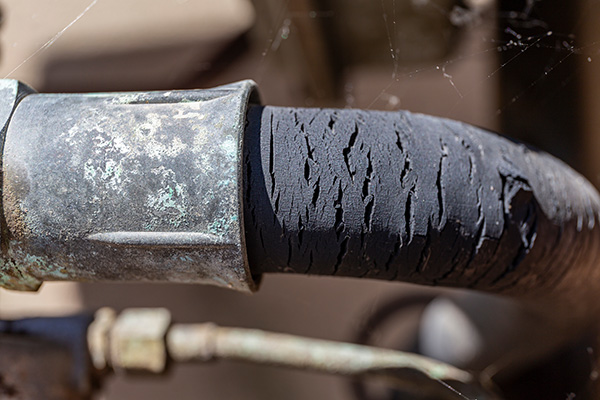
It’s easy to overlook a cracked hose or worn belt when everything else under the hood seems to be working fine. But what may seem like a small issue now can quickly turn into a big problem later. Hoses and belts are some of the most critical components in your engine bay, and when they fail, they often do so without much warning.
Ignoring these signs puts your car at risk, and it can also leave you stranded, cause costly engine damage, or even result in a breakdown on the side of the road in the middle of traffic. Let’s look at what these parts do, how to spot trouble early, and why it’s worth fixing the issue before it escalates.
Engine Belts and Hoses
Under the hood, belts and hoses manage everything from engine cooling to electrical charging. The serpentine belt powers the alternator, power steering pump, water pump, and sometimes the A/C compressor. Without it, your vehicle won’t run for long. Timing belts or timing chains, depending on your vehicle, keep the engine’s internal components synchronized. If one of those fails, the results can be severe.
Hoses carry fluids like coolant and sometimes vacuum pressure between key systems. Radiator hoses, heater hoses, and vacuum lines all play a part in engine function and cabin comfort. When a hose breaks or collapses, systems that depend on fluid or air flow can quickly shut down or overheat.
Cracks Are a Sign of Aging and Wear
Cracks in belts and hoses happen over time. Heat, vibration, and exposure to oil and chemicals break down the rubber and plastic compounds used in these parts. In Marina del Rey’s warm climate, exposure to heat is almost constant, especially for cars parked outside.
Tiny surface cracks might not seem urgent, but they’re a warning that the material is beginning to fail. Once a belt or hose begins to degrade, it can lose tension, swell, or split without much more stress. These issues rarely get better on their own.
What Happens When You Wait Too Long
A cracked serpentine belt might still function for a while, but once it breaks, you’ll lose power steering, battery charging, and engine cooling all at once. That means your vehicle could stall, overheat, or become difficult to control.
If a timing belt fails, the damage can be even worse. In interference engines, it can cause the pistons and valves to collide, resulting in bent valves or a ruined engine. Timing belt failure usually gives little to no warning, so proactive replacement is key.
Cracked hoses can lead to coolant leaks. If coolant escapes and you don’t catch it in time, your engine can overheat within minutes. Overheating causes head gasket failure, warping of engine components, and in extreme cases, complete engine failure.
Vacuum hoses that crack or collapse can cause drivability issues like rough idling, poor fuel economy, or stalling. These problems may seem like electrical or sensor issues, but they’re often caused by air leaks in deteriorating hoses.
What to Watch For
The signs of belt or hose wear are subtle at first. You might notice:
- A squealing noise when you start the engine or turn the steering wheel
- A loose or bouncing belt under the hood
- Leaks or puddles under the vehicle
- A hot smell or steam from the engine compartment
- Temperature gauge rising faster than usual
Visual inspections can help too. Look for visible cracks, glazing (a shiny, smooth surface), bulges, or fraying on belts. For hoses, feel for soft spots, cracking, or any bulging around the clamps.
Villa Marina Auto Care – Keeping Your Engine in Top Shape in Marina del Rey, CA
At Villa Marina Auto Care, we take preventive maintenance seriously. Cracked hoses and worn belts might seem like a minor issue, but they’re some of the most common causes of breakdowns while driving. If your engine’s accessories show signs of age, let us look. We’ll help you avoid unexpected failures and keep your vehicle dependable through every mile in Marina del Rey.